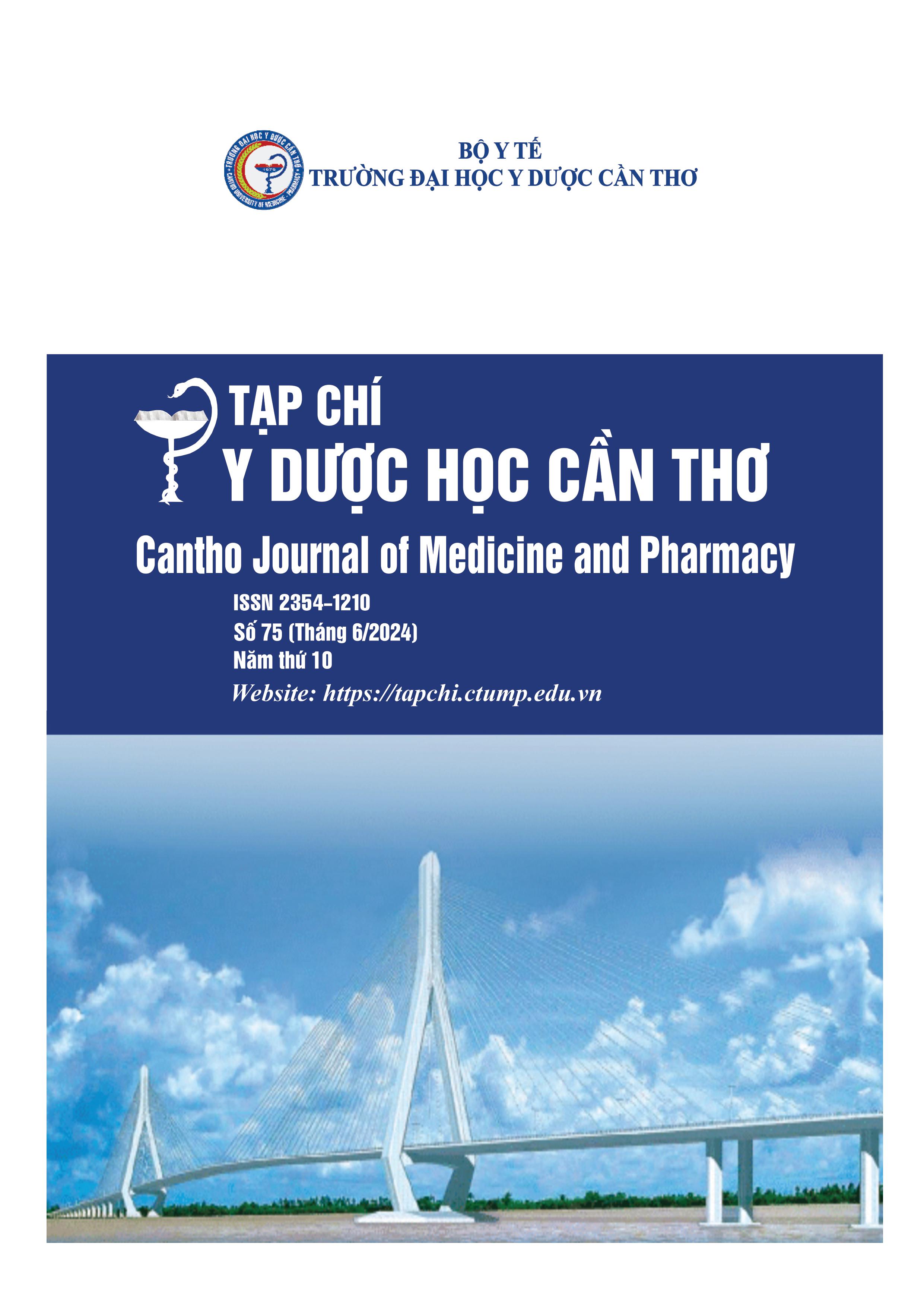EVALUATION THE INFLUENCE OF DEQI SENSATION ON THE IMMEDIATE ANALGESIC EFFECT OF ACUPUNCTURE IN PATIENTS WITH NECK AND SHOULDER PAIN CAUSED BY CERVICAL SPONDYLOSIS
Main Article Content
Abstract
Background: According to Traditional medicine, Deqi sensation is considered to be great importance to clinical efficacy. However, the available evidence from clinical trials has not been sufficient to conclusively demonstrate the interaction between Deqi and clinical efficacy so far. Objectives: To evaluate the influence of Deqi sesation on the immediate analgesic effect of acupuncture in patients with neck and shoulder pain caused by cervical spondylosis. Materials and methods: A non blinded randomized controlled trial was conducted on 90 patients with neck and shoulder pain caused by cervical spondylosis at Cantho Traditional medicine hospital, eligible for research, assessed by scale VAS, and data analysis software SPSS 20.0. Results: VAS of both acupuncture with Deqi (AWD) and acupuncture without Deqi (AOD) groups were decreased significantly after treatment (from 86.62±2.941 to 36.67± 12.608 and from 86.41±3.303 to 69.87±4.808 respectively). The pain relief of the AWD group (reduced 49.95±13.542) was much greater than the AOD group (14.53±4.590) (p<0.05). Conclusions: AWD and AOD is both effective in pain relief. However, the immediate pain relief effect of neck-shoulder pain caused by cervical spondylosis in the AWD group was significantly greater than the AOD group (p<0.05).
Article Details
Keywords
Deqi, Cervical spondylosis, Neck and shoulder pain, AWD-Acupuncture with Deqi, AOD-Acupuncture without Deqi
References
2. Cherkin D.C., Sherman K.J., Avins A.L., Erro J.H., Ichikawa L., et al. Archives of internal medicine. 2009. 169(9), 858-866, https://doi.org/10.1001/archinternmed.2009.65.
3. Nguyễn Thị Xuyên. Hướng dẫn chẩn đoán và điều trị các bệnh cơ xương khớp. Nhà xuất bản Y học. 2021. 145-149.
4. Nguyễn Đức Minh, Nguyễn Vinh Quốc. Đặc điểm lâm sàng đau vùng cổ gáy do thoái hóa cột sống trên bệnh nhân điều trị tại Bệnh viện Châm cứu Trung ương. Tạp chí Y học Việt Nam. 2021. 504(1), 95-96, doi:10.51298/vmj.v504i1.840.
5. Hoàng Văn Minh. Phương pháp chọn mẫu và tính toán cỡ mẫu trong nghiên cứu khoa học sức khỏe. Trường Đại học Y tế Công cộng, Hà Nội. 2020. 32-38.
6. Trịnh Thị Diệu Thường. Châm cứu học 1. Nhà xuất bản Y học. 2021. 50-55.
7. Li Hao, Ma Z.H., Wang Xia, Yuan S.M., Tian Y.H., et al. Comparative study of preoperative sagittal alignment between patients with multisegment cervical ossification of the posterior longitudinal ligament and cervical spondylotic myelopathy. The Spine Journal. 2022. 23(11), 1667-1673, doi: 10.1016/j.spinee.2023.06.390.
8. Cao Thị Huyền Trang, Phan Thị Hồng Giang. Tình hình điều trị bệnh nhân thoái hoá cột sống cổ tại Bệnh viện Y học cổ truyền Bộ công an. Tạp chí Y học Việt Nam. 2024. 534(1), 141-144, doi: 10.51298/vmj.v534i1.8050.
9. La Vĩnh Cường. Nghiên cứu kết quả điều trị bệnh nhân thoái hóa cột sống cổ bằng phương pháp vật lý trị liệu tại Bệnh viện Điều dưỡng-Phục hồi chức năng tỉnh Thừa Thiên Huế. 2014. h ttps://bvphcn.thuathienhue.gov.vn/?gd=11&cn=1&id=182&tc=109.
10. Trịnh Thị Diệu Thường. Bệnh học và điều trị Nội khoa kết hợp Đông Tây Y tập 2. Nhà Xuất bản Y học. 2022. 189-191.
11. Nguyễn Tuấn Linh, Nguyễn Trọng Minh, Tôn Thất Hoàn Vũ, Võ Thị Diệp Linh, Nguyễn Thị Hồng Hả, và cộng sự. Thực trạng đau vai gáy và đặc điểm chứng hậu-chứng trạng theo Y học cổ truyền của Sinh viên trường Đại học Y dược, Đại học Huế. Tạp chí Y học lâm sàng Bệnh viện Trung ương Huế. 2023. 84(10), 70-79, doi: 10.38103/jcmhch.84.10.
12. Lin K.Y., Chang Y.C., Lu W.C., Kotha P., Chen Y.H., et al. Analgesic Efficacy of Acupuncture on Chronic Pelvic Pain: A Systemic Review and Meta-Analysis Study. Healthcare (Basel, Switzerland). 2023. 11(6), 830, doi: 10.3390/healthcare11060830.
13. Zhang Shuo, Mu Wei, Xiao Lu, Zheng W.K., Liu C.X., et al. Is Deqi an indicator of clinical efficacy of acupuncture? A systematic review. Evid Based Complement Alternat Med. 2013. 2013, 15, doi: 10.1155/2013/750140.
14. Lund I., Lundeberg T., Lonnberg L., Svensson E. Decrease of pregnant women’s pelvic pain after acupuncture: a randomized controlled single-blind study. Acta Obstetricia et Gynecologica Scandinavica. 2006. 85(1), 12–19, doi: 10.1080/00016340500317153.


